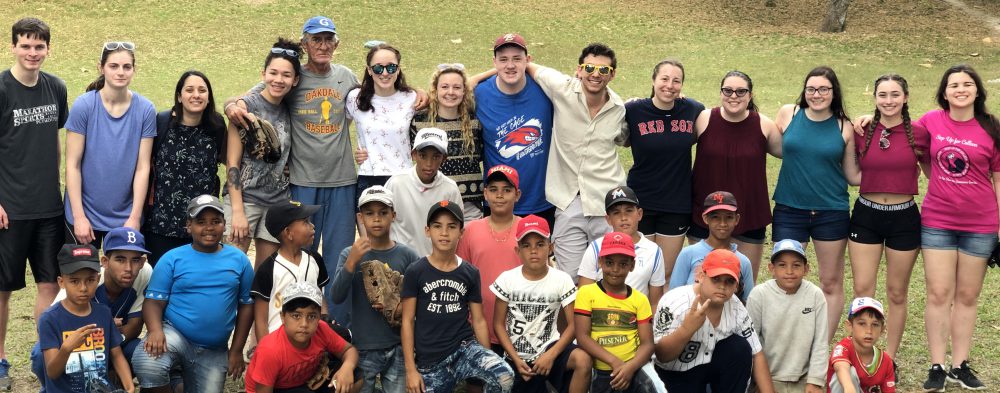On this day, we had a lecture on Race in Cuba and visited a farm-to-table restaurant owned and run by an Italian immigrant.
Tomas Fernandez Robaina was the lecturer for the day. Tomas, or Tomasito, as his friends call him for his short stature and affable demeanor, has studied race for decades. According to him, he has taken twenty-five trips to the United States to study with various higher education institutes discussing the complex manifestations of race and race relations in the Republic of Cuba. He has visited such universities as Amherst College and Harvard. When asked about African American writers who were the most influential in his studies abroad, he cited W.E.B Dubois and Booker T. Washington.
The story of race in Cuba is very similar to the one in the United States in that race has been a determinant factor in social status for darker citizens. Slavery was not outlawed in Cuba until nearly two decades after the United States Civil War. Similar to the United States history, the military appears to be the first of the social and governmental institutions to integrate.
The effects of racism were most notably pointed out by the islands most famous political and social thinker: Jose Marti. His essay “Our Race” is thought to capture the true essence of the Cuban disposition toward race. In the essay, Marti calls for unity among the racial factions in order to oppose the threatening forces of the Spanish Colonizers and proposes even broader positive consequences for unification. He denounces divisive attitudes between the races and propositions an ideal of harmony and brotherhood among all Cuban peoples.
There are varying degrees and appearances of racism: structural and implicit, or cultural and blatant. Since the colonization of Latin American countries by Spain, degrees or classes of race have become the norm. Mixed race peoples know greater privilege and priority in the hierarchical social structure. In total, there have been reported more than 40 classes of race in the Spanish colonial caste system. Professor Robaina’s mother was white and his father black, in Cuban society, he is not considered “black” the way he might in America society.
Following the successful attainment of power by Fidel Castro and the communist revolution, Castro declared his intent to end racism. Just two years after his initial claim, Castro announced that racism has been eradicated; a claim which is now contested by many who once accepted his findings. Robaina himself believed the narrative proposed by Castro. In his eyes, there was empirical proof: Blacks were inhabiting political, social, and occupation roles they were formerly barred from. It appeared that structural racism and discrimination had been so thoroughly and effectively combated that Cuba ought to be considered and in-fact considered itself post racial.
Robaina is now convinced that this is not the case. Like scholars of race in the United states, Roabina is interested in the influence of different cultural institutions on the conceptual institutions of race including art and religion. He studies hip-hop, one media through which denizens express their discontent with what they perceive as racial inequality and its discourse about race. Additionally, he discusses the tradition of the Yoruba tribe, some of whom were brought to Cuba as an enslaved people. The modern descendants of these people practice Santeria which is a modification of two religions: Catholicism (which was forced upon enslaved peoples) and traditional Yoruba religious teachings.
After our race lecture, we visited the only farm-to-table restaurant, Meditteraneo Habana, in Cuba- which developed in response to the lack of consistent access to goods on the island. Their options offered for a main course meal all sounded tantalizing and our table, which included Victoria, Katrina, Jen, and I, circumvented the stress of having to choose between courses by agreeing to each order a different dish so that we might share and get a taste of each. I can sincerely attest to the quality and craftsmanship of this small eatery. We tasted homemade spinach ravioli, handmade pizza, and succulent kabobs.
The restaurant, we learned, acted to advise farmers on which crops to grow sell. By the time we visited, the relationship between the growers and chefs had developed well enough to sustain their restaurant independent of state produce.
Our entire educational and culinary experience in Cuba was enough to warrant a second return. One gets the sense that Habana is solely the “tip of the iceberg” when it comes to novel practices of human thriving. For myself, I have been trying to finagle my way back by petitioning my department to sponsor a trip in collaboration with the University of Habana, which potentially could be offered as an senior capstone option for Philosophy majors. We shall see where that leads, but in the meantime, I still have my memories and photos to reminisce on a time spent in a complicated paradise.
